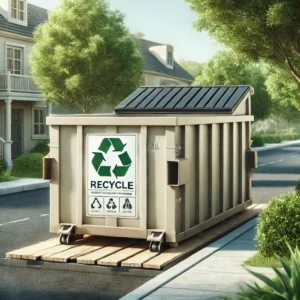
Recycling dropoff locations play a crucial role in reducing waste and promoting sustainability. These facilities provide accessible options for individuals to responsibly dispose of recyclable materials, ensuring that they are diverted from landfills. By understanding where and how to use these drop-off sites, people can contribute significantly to environmental conservation efforts in their communities.
Many towns and cities have established recycling programs that include designated drop-off centers, making it easier for residents to participate. These locations often accept a variety of materials, such as paper, plastics, and metals, encouraging wider community engagement. Knowing the types of items accepted at local drop-off sites can help maximize recycling efforts.
Educating oneself about the recycling process can lead to more efficient and effective practices. Drop-off points not only simplify the recycling journey but also foster a sense of responsibility towards the environment. By utilizing these resources, individuals take an active part in protecting natural resources and supporting a sustainable future.
Understanding Recycling Drop Off
Recycling drop-off centers provide a convenient solution for individuals looking to dispose of recyclable materials responsibly. These centers accept various items, helping to reduce waste and promote sustainability.
Types of Recyclable Materials
Recycling drop-off centers typically accept a wide range of materials. Commonly accepted items include:
- Paper and Cardboard: Newspapers, magazines, and cardboard boxes.
- Plastics: Most containers labeled with recycling symbols #1 (PETE) and #2 (HDPE).
- Metals: Aluminum cans and tin cans are widely accepted.
- Glass: Clear, green, and brown glass bottles and jars.
It’s essential for individuals to check with their local drop-off center regarding specific accepted materials, as regulations may vary by region. Contaminated items can hinder the recycling process, so proper sorting is crucial. Many centers also have special collection days for items like electronics and batteries.
Benefits of Using Drop Off Centers
Utilizing recycling drop-off centers offers several advantages.
- Convenience: They often provide flexible hours for drop-off, making recycling more accessible.
- Environmental Impact: Properly recycling materials reduces landfill waste and conserves natural resources, contributing to a healthier planet.
- Community Engagement: These centers often promote community awareness about recycling and sustainability practices.
Additionally, drop-off centers can serve as educational resources, providing information about what materials are recyclable and how to prepare them for recycling. Supporting these facilities helps foster a culture of environmental responsibility within the community.
How to Use Drop Off Centers
Using recycling drop-off centers effectively involves knowing where to find them, preparing materials correctly, and following best practices to ensure a smooth process. The following sections detail important information and steps to take when utilizing these facilities.
Locating Your Nearest Center
To find a recycling drop-off center, individuals can use various resources. Online directories and local government websites often provide addresses and operational hours.
Many municipalities have specific centers dedicated to different types of materials, such as electronics, plastics, and paper. Local community boards or libraries may also have brochures with recycling information.
Mobile apps focused on waste management can help users identify nearby locations. Knowing the center’s accepted materials is vital; visiting a site that does not take specific items may lead to wasted trips.
Preparing Items for Drop Off
Proper preparation of items for drop-off is crucial. First, clean recyclables to remove any food residue that could contaminate batches. For instance, rinsing out plastic bottles or cans enhances the recycling process.
Next, it is important to sort materials according to the guidelines of the drop-off center. Different facilities may have specific requirements regarding plastic types, glass colors, or paper quality.
Items such as batteries, electronics, and hazardous waste often require special handling. Individuals should consult the drop-off center’s website for specific instructions on how to prepare these materials.
Recycling Drop Off Best Practices
Adhering to best practices can improve the recycling experience. First, individuals should check the center’soperational hours before visiting to avoid inconvenience.
Bring a list of accepted items to ensure proper recycling. This can prevent confusion and save time during drop-off.
Consider using reusable containers to transport recyclables, as this reduces waste. Lastly, avoid combining non-recyclable items with recyclables. Following these practices can aid in the effective management of recyclable materials.
Vaishno Devi VIP Darshan Ticket Price: An Overview for Pilgrims
When planning a pilgrimage to Vaishno Devi, many visitors seek information on the VIP dars…